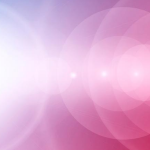FDA | EUAs for KN95s, Certain Other Respirators Revoked
FDA In Brief: FDA Revokes Emergency Use Authorizations for Certain Respirators and Decontamination Systems as Access to N95s Increases Nationwide
The following quote is attributed to Suzanne Schwartz, M.D., M.B.A., director of the Office of Strategic Partnerships and Technology Innovation in the FDA’s Center for Devices and Radiological Health
“Throughout the pandemic, the FDA has worked closely with our federal partners at the Centers for Disease Control and Prevention’s National Institute for Occupational Safety and Health (NIOSH), the Occupational Safety and Health Administration (OSHA) and with manufacturers to protect our front-line workers by facilitating access to the medical supplies they require. As a result of these efforts, our country is now better positioned to provide health care workers with access to NIOSH-approved N95s rather than using non-NIOSH-approved respirators or reusing decontaminated disposable respirators.
Early in the public health emergency, there was a need to issue emergency use authorizations (EUAs) for non-NIOSH-approved respirators as well as decontamination and bioburden reduction systems to disinfect disposable respirators. Today, those conditions no longer exist. Our national supply of NIOSH-approved N95s is more accessible to our health care workers every day.
Today, the FDA is taking additional action by announcing the revocation of EUAs for imported, non-NIOSH-approved respirators as well as decontamination and bioburden reduction systems because of an increase in domestically-manufactured NIOSH-approved N95s available throughout the country. As access to domestic supply of disposable respirators continues to significantly improve, health care organizations should transition away from crisis capacity conservation strategies that were implemented at the onset of the pandemic.”
Additional Information
- The U.S. Food and Drug Administration announced it is revoking EUAs of all non-NIOSH (National Institute of Occupational Safety and Health)-approved disposable respirators, which includes imported disposable respirators such as KN95s, along with revoking EUAs for decontamination and bioburden reduction systems.
- Today’s actions are consistent with the Centers for Disease Control and Prevention’s (CDC) updated recommendations that health care facilities not use crisis capacity strategies and should promptly return to conventional practices. They are also consistent with the Occupational Safety and Health Administration’s (OSHA) recently published Emergency Temporary Standard (ETS) to protect health care workers, which requires health care employers to provide NIOSH-approved or FDA-authorized respirators for workers potentially exposed to COVID-19.
- All manufacturers of decontamination and bioburden reduction systems have requested, and the FDA has proceeded with, the revocation of their EUAs, effective June 30, 2021.
- Since the beginning of the pandemic, NIOSH has approved more than 875 respirator models or configurations, with some of these manufactured by approximately 20 new, domestic NIOSH-approval holders. In addition, as of today, there are more than 6,400 total respirator models or configurations on the NIOSH-certified equipment list which have met the NIOSH-approved EUA criteria and thus are FDA-authorized. These include:
- more than 600 filtering facepiece respirator (FFR) models (of which there are over 530 N95 FFR models),
- more than 5,500 elastomeric respirator configurations, including new elastomeric respirators without an exhalation valve, and
- more than 360 powered air purifying respirator configurations.
- Today’s EUA revocations announcement for all non-NIOSH approved disposable FFRs follows earlier actions to limit authorization of imports of non-NIOSH-approved filtering facepiece respirators, imports of non-NIOSH approved filtering facepiece respirators manufactured in China, and decontamination and bioburden reduction systems for disposable respirators.
- FDA has also withdrawn two related decontamination and bioburden reduction guidance documents:
- Recommendations for Sponsors Requesting EUAs for Decontamination and Bioburden Reduction Systems for Face Masks and Respirators During the Coronavirus Disease 2019 (COVID-19) Public Health Emergency: Guidance for Industry and Food and Drug Administration Staff
- Enforcement Policy for Bioburden Reduction Systems Using Dry Heat to Support Single-User Reuse of Certain Filtering Facepiece Respirators During the Coronavirus Disease (2019) Public Health Emergency
- The FDA recommends health care personnel transition from extended use of disposable respirators to single-use for single-patient interactions as appropriate. See the letter to health care personnel for additional information.
###
The FDA, an agency within the U.S. Department of Health and Human Services, protects the public health by assuring the safety, effectiveness, and security of human and veterinary drugs, vaccines and other biological products for human use, and medical devices. The agency also is responsible for the safety and security of our nation’s food supply, cosmetics, dietary supplements, products that give off electronic radiation, and for regulating tobacco products.
Inquiries
- Media:
- Shirley Simson
- 202-597-4230
- Consumer:
- 888-INFO-FDA

















